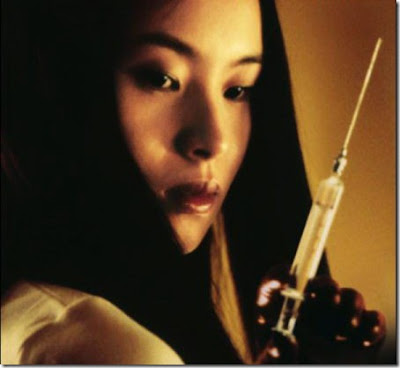
addition to three resulting in the U.S. has the No-/Low-Budget-Produktionen filmography Buddy Giovinazzo many German TV thriller. In 2003, he has his first Police call 110 turned to Edgar Selge, followed by two episodes Wilsberg , three episodes The detective, a consequence use in Hamburg and three crime scenes, in August turned Giovinazzo another in Leipzig . 2008/2009 he was 18 months in LA to shoot the independent film Life Is Hot in Crack Town , 14 years had taken it until he had found a donor for the filming of his debut novel. Rich he will also not work with this, Cracktown was indeed in the United States flopped in theaters, but. With the realistic depiction of poverty, addiction and violence in America, no director has become rich.
During his visit to Hamburg Buddy Giovinazzo told many interesting anecdotes about his life as a director between the worlds, a position that does not make him rich, but it allows for many interesting insights into the various film production systems in the U.S. and Germany. What For example, the work concerns with German actors, Giovinazzo was amazed at the tendency to scream and Erregtsein the male performer. During his first police call 110 ( Deep Wounds of 2003) he brought in Edgar Selge that Tauber is not a permanent Wutkopf, but a gentleman with precipices, which also disengages times, but can also be very calm and tender. In the same year he won Axel Prahl ( scene: 3 x black cat ) that Inspector Thiel not bleeding to 180 must, but after winning a dispute may sometimes treat yourself to a relaxed smile. In the U.S., Giovinazzo, the actors are more relaxed and speaking in front the camera in the same quiet tone of voice as behind the camera when reviewing the scene.
Cracktown cost around a million dollars less than the average crime scene, the gross production costs 1.3 to 1.6 million euros lie. lie so close to the budget in numbers together, as far as they gape in the system comparison: While the total cost of Cracktown Giovinazzo According covering only about the catering costs the average U.S. feature film, you move on German TV with the same money in the big leagues . Rich, so Giovinazzo, but it could still only in the U.S., for while the irregular Working for German television, with its fixed fee rates as he and his wife financially just helps make ends meet, can also be the cheapest feature film production in the USA getting six are in the lottery, see Reservoir Dogs , The Blair Witch Project or Paranormal Activity.
The question of why he do not work for American TV, answered Giovinazzo, pointing out that a director in the U.S. TV in general have no freedom, his only task was to film previously well-defined settings. Anyone willing to experiment, is released, all creative power is in the hands of the writers and producers. Everybody knows today, David Simon, JJ Abrams and Alan Ball, none of the episodes directors The Wire, Lost or Six Feet Under . By contrast, the rules that apply to turning a crime scene (this would be one to follow), manageable, as long as you adhere to the basic structure of the screenplay, one could also try things. Just as in a New Perspective (2006) with Udo Kier as eccentric profiler on the side of Edgar Selge, considered the most bloody as a German TV crime history and Giovinazzos prepared editor sleepless nights.
the huge quality difference between the American and German TV productions said Giovinazzo work on the scripts: create While the U.S. has several authors, five, six, seven or more versions of a book and work out his themes, motifs and dialogue is always accurate, in this country no later than the second draft final, more time and money would not invested. He also lamented the fact that in Germany there is no free market for screenplays, because this is not worthwhile for the authors. They wrote only in the context of permanent contracts with TV broadcasters and production companies, which is why he has found to this day still not a good script for his first German film.
Where the too frequent revision of scripts also can lead, shows the currently in development history of Potsdamer Platz after the same great Berlin novel Buddy Giovinazzo. Tony Scott, a great admirer of the book, has secured the option on the film version and Giovinazzo charged with writing the screenplay. After he had written two versions, the book by Louis Mellis and David Scinto was revised recently, it was announced that the movie in Puerto Rico to be realized. The script doctors will therefore still have much work.
Buddy Giovinazzo recommends 5 TV Series:
first Dexter
second True Blood
third Curb Your Enthusiasm
4th Weeds
5th Mad Men

